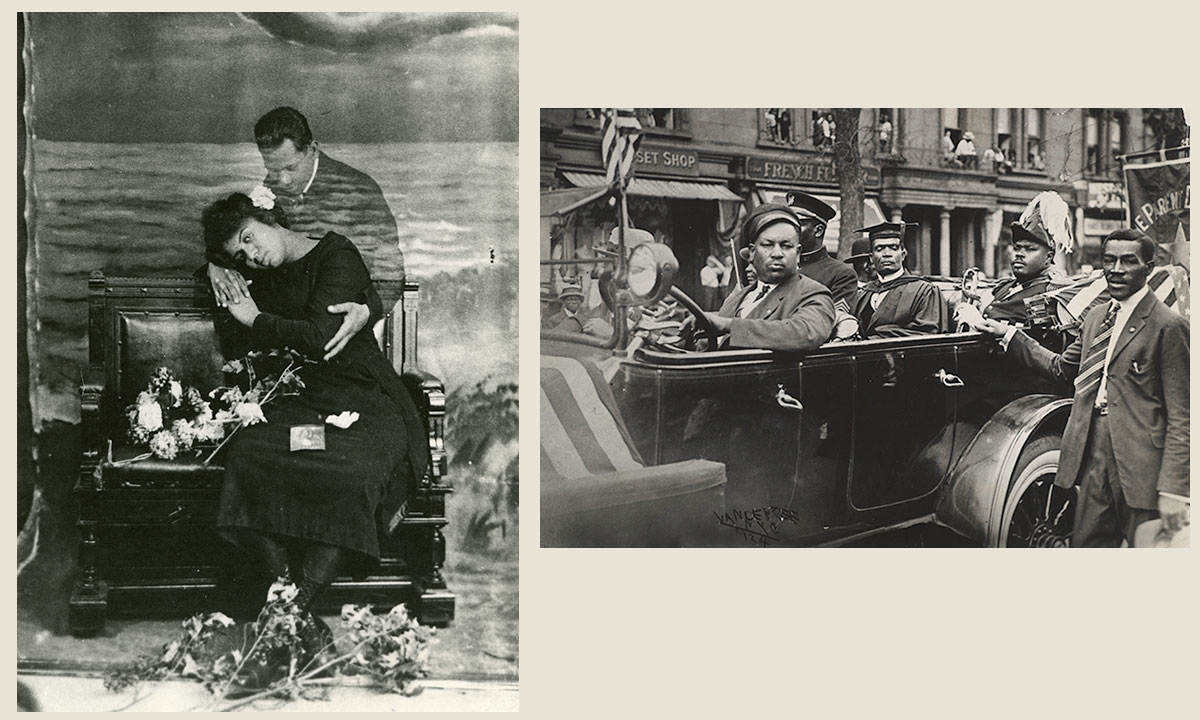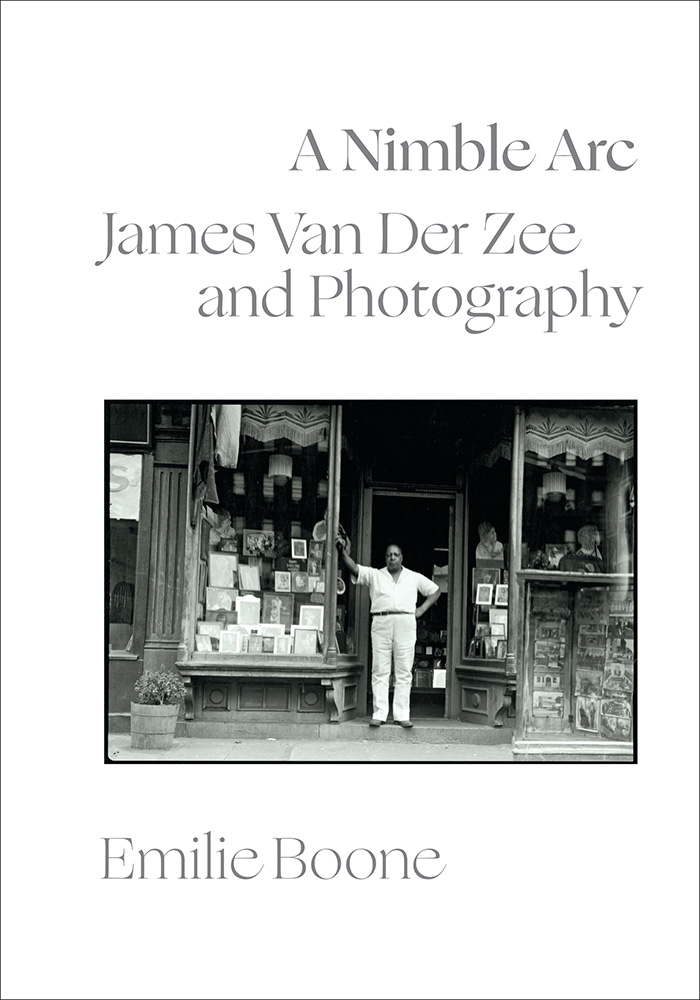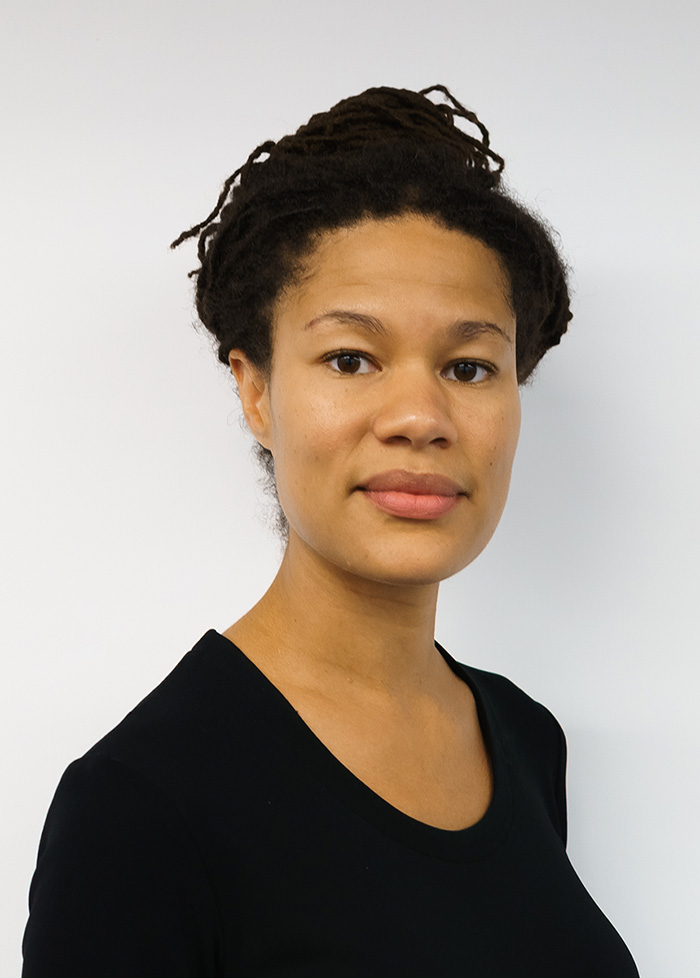Made by a machine, reproducible and always an index of something real, the photograph as a work of art has been debated since its invention in 1839. From the earliest daguerreotypes to the estimated 1.5 trillion digital photographs taken last year, the circulation of photographs has changed dramatically. And now that we so often swipe rather than peruse the image, debates over authorship and authenticity continue.
Emile Boone ’02’s terrific new book on James Van Der Zee, one of history’s best-known Black photographers, takes on these issues and positions them in the context of 20th-century Harlem. The book uses compound methodologies to propose that the common practice of placing Van Der Zee into the art scene of the Harlem Renaissance is askew—he was not part of that cultural world, but rather part of a network of commercial studios that often focused on making vernacular photos alongside studio portraits. There are fans, mirrors, blotters and thermometers with Van Der Zee’s photos on them; he made calendars. His early work was displayed in drugstore windows. Boone makes the point that all of Van Der Zee’s work should be seen as quotidian—part of the everyday, not the art world.
This recentering of the quotidian situates Van Der Zee in the broader field of African diasporic art history, in which vernacular photographs challenge art historical narratives. Yet the quotidian aligns with the historical subjection and precarity of Black life and “operate[s) in pervasive ways, named and unnamed, seen and unseeable.” Boone uses the critical theories of Frantz Fanon and W.E.B. Du Bois to challenge how, while Van Der Zee is so often compared with white photographers, he is also placed within narratives of whiteness that favor the singularity of unique authorship. Boone does not deny the signature aesthetics of Van Der Zee; comparing his portraits to those by other Harlem photographers demonstrates his stunning tonal properties and deft compositional strategies.
The unseen or unknown is an important part of this study, in which the visual evidence of other Harlem photographers is largely missing. While more than 30,000 photographs by Van Der Zee are known, very little remains of the work of other Harlem commercial photographers. And this point is vital to Boone’s argument: How do you practice art history, based in visual analysis, when there is no visual evidence? Boone turns to other kinds of quotidian sources: maps, advertisements, business directories and documents of the studios themselves.
Other chapters in the book disrupt the art history of Van Der Zee by exploring his project on Marcus Garvey, which is mostly known through newspaper illustrations; the copy photographs he made in the 1940s, in which he restored other photographers’ portraits of Black subjects; and the manipulation and inclusion of his photos as large-scale murals in the controversial exhibition at the Met in 1969, Harlem on My Mind: The Cultural Capital of Black America, 1900–1968.

Above: Two of Koehler’s students studied this untitled Van Der Zee image from 1925.
Top right: Marcus Garvey in a UNIA parade, 1924 Bottom right: Untitled photo, year unknown
In my Amherst art history course “The Photograph,” each student picks a single photograph from the collection of the Mead Art Museum to study for the entire semester. There are at least 30 photographs by Van Der Zee in this collection, and two of my students have chosen to work on the same untitled image of his from 1925: an experimental photograph of a woman, likely in mourning, with a ghostlike image of a man embracing her from behind, and a painted screen of a seascape as the deepest plane. Lukas Song ’24 chose to compare this photograph to a death scene in Zora Neale Hurston’s novel Their Eyes Were Watching God (1937), while Nina Diaz ’26 focused on what appear to be drowning bodies in the background, to address the history of the Middle Passage and generational suffering. Aided in their research by Sara Smith at Frost Library and Miloslava Hruba from the Mead, these students wrote detailed, original analyses.
Boone—an assistant professor of art history at New York University—would surely appreciate the work of these students, particularly their willingness to explore Van Der Zee’s work in new critical contexts. We now have the benefit of Boone’s groundbreaking scholarship and the constellatory methodologies she has employed, which serve to resituate the history of African American diasporic art.
Koehler is a visiting professor at Amherst and chair of the Department of Art and the History of Art.
Photos: Mead Art Museum Collection/James Van Der Zee Archive, Metropolitan Museum of Art

